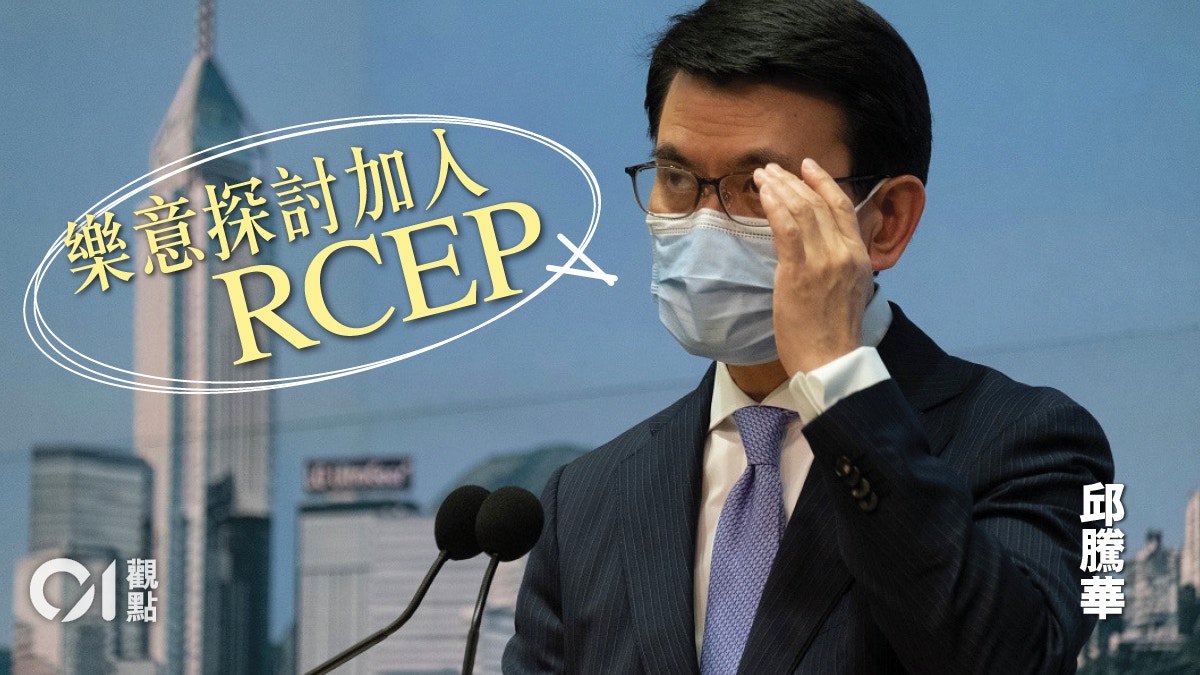01 view
Written by: Commentary Editing Room
2020-11-18 07:00
Last update date: 2020-11-18 07:00
Last Sunday (15th), five countries including China, Japan and ten ASEAN countries signed the Regional Comprehensive Economic Partnership Agreement (RCEP).
On Monday, the Secretary for Commerce and Economic Development, Yau Tenghua, mentioned the development potential of RCEP when attending the APEC meeting. He pointed out that Hong Kong would be happy to join in and start a dialogue once the organization countries open up new members.
The total population and GDP of RCEP signatories account for about one-third of the world's total. It is currently the largest regional free trade zone and economic cooperation organization, and it is also the most potential economic development zone in the Asia-Pacific region.
The pursuit of joining the RCEP is worthy of recognition. However, Hong Kong should not just stop at the level of participation, but should also think about how to use the RCEP platform to further optimize Hong Kong’s economic development structure.
The Secretary for Commerce and Economic Development Qiu Tenghua (pictured) attended the APEC Ministerial Video Conference last night (16th).
(Photo by the Information Services Department)
Tariff cuts will hardly benefit Hong Kong
According to RCEP, countries will gradually eliminate tariffs between each other within 10 to 20 years, and the overall tariff abolition rate will reach 91%.
In particular, it also includes three major East Asian economies, China, Japan, and South Korea. This will be the first large-scale tariff abolition agreement among the three countries.
This will greatly stimulate the trade volume and economic activities in the region, but it will not help Hong Kong very much.
It is very different from the populous country that signed, Hong Kong is an urban economy. Imports have almost no tariffs, and the production and export of goods are very limited. It is difficult to benefit from the removal of tariffs.
Even if it wants to re-industrialize, Hong Kong does not master the manufacturing of key technology products, and it is difficult for high-end products to compete with Japan and the Mainland.
Regarding low-end products, Hong Kong’s wages are high and it is difficult to compete with some of the backward countries in Southeast Asia.
Even if the development of regional trade may stimulate the re-export business of goods to Hong Kong, it has nothing to do with whether Hong Kong joins RCEP.
Grasp the door opened by RCEP
In this case, if Hong Kong wants to find benefits from joining RCEP, it must start from the two major directions of service trade and investment.
Compared with the existing "ASEAN+1" agreement, another major focus of the RCEP agreement is to further open the door to service trade and investment options.
Previous agreements were operated on a "white list", and only specific approved areas were opened to foreign companies and investments.
RCEP has changed its operation to a "blacklist" method, that is, only certain areas that have been added to the blacklist can prohibit or restrict foreign companies from entering or investing, which is more convenient for foreign services and investment than the "whitelist".
On November 15, 2020, the leaders of the ten ASEAN countries, China, South Korea, Japan, Australia, New Zealand and other countries participated in the RCEP signing ceremony in the form of video.
(Xinhua News Agency)
If Hong Kong can join the RCEP, it will certainly enjoy these conveniences, which will help Hong Kong funds find foreign opportunities.
However, looking at the situation in Hong Kong, apart from its close economic ties with the Mainland, there are still some shortcomings in economic and trade relations with ASEAN and other countries.
Hong Kong's investment in service trade in ASEAN is not particularly satisfactory.
From the ASEAN Investment Report 2019 published by ASEAN, it can be seen that from 2014 to 2018, Hong Kong’s “Foreign Direct Investment” (FDI) in the ASEAN region was only US$5.3 billion, of which only 23% of Hong Kong’s relatively advantageous financial services industry Billion US dollars, far behind the US’s 11.6 billion and the EU’s 4.9 billion.
Of course, although Hong Kong's economy is not as large as the United States and Europe, there is no doubt that there is still much room for development in service investment in ASEAN and other regions.
In fact, as early as when China launched the "Belt and Road" initiative, studies have pointed out that some service companies in Hong Kong were not interested in investing in Southeast Asia and other "Belt and Road" regions because they were satisfied with local returns.
For this reason, what Hong Kong has to do in the future is not only to strive to join RCEP, but also to encourage enterprises to have a long-term vision and use creativity to find more overseas investment opportunities.
ASEAN Asia-Pacific Signs RCEP Symbolizes Breakthrough of US Siege
China's "Economy Brand" strategy gradually bears fruit
01 view
RCEP Hong Kong Economy Qiu Tenghua 01 Viewpoint

